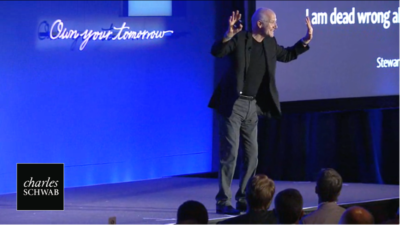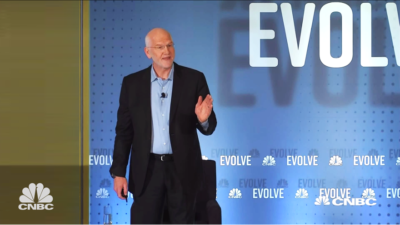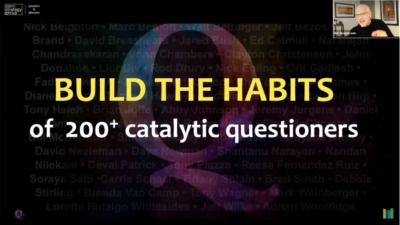Questions Are the Answer: Discovering the Power of Inquiry in the Innovation Process
When confronted with a problem, our typical response is to look for a pre-packaged solution. But in a world increasingly transformed by technology and riddled with uncertainty, we face problems that have no ready-made answer or past precedent. Employees may think their role is to have all the answers, but in fact, says Hal Gregersen, they should be asking questions – especially when operating on the edge of uncertainty. In this presentation based on his book, “Questions Are the Answer: A Breakthrough Approach to Your Most Vexing Problems at Work and in Life” (Harper Collins, November 2018), Gregersen outlines his Question Burst method, which is designed to transform companies into hotbeds of innovation by teaching leaders and employees to rediscover their powers of inquiry. Drawing upon his first-hand research on innovative companies and leaders at Amazon, Pixar, Tesla, Zymergen and more, Gregersen demonstrates how asking questions inevitably leads not only to solutions but to valuable new and transformative ideas.
Bursting the CEO Bubble: Asking Catalytic Questions – Before It’s Too Late
Powerful organizational and industrial forces can keep any senior leader from hearing (or asking) uncomfortable questions, and creating a “good news cocoon,” at his or her own peril. It’s what Hal Gregersen calls “The Leader’s Dilemma,” and it can be exceedingly dangerous in an era when dramatic market shifts can happen unexpectedly. In this session, Gregersen discusses how leaders and organizations can escape the innovator’s most dangerous blind spot, the space where “we don’t know what we don’t know.” Based on in-depth interviews with more than 200 of the world’s best question-asking leaders, including Charles Schwab’s Walt Bettinger, Amazon’s Jeff Bezos, Bain’s Orit Gadiesh, Tesla’s Elon Musk, Fidelity’s Abigail Johnson, and General Stanley McChrystal, he reveals five daily disciplines these leaders rely on to surface the right questions. Gregersen also helps audience members become better questioners in real time by sharing key questioning tools and helping them unlock solutions, innovations and processes.
AI Can Help You Ask Better Questions — and Solve Bigger Problems
Most companies still view AI rather narrowly, as a tool that alleviates the costs and inefficiencies of repetitive human labor and increasing organizations’ capacity to produce, process, and analyze piles and piles of data. But when paired with crucial inquiry-related skills it can help people ask better questions and be more innovative.
In this keynote based on his recent Harvard Business Review article, Gregersen shares two distinct, yet related, paths to do this with a wide range of examples, including companies like Cybereason, Colgate-Palmolive, and DeepMind.
Path #1: Use the technology to change the cadence and patterns of their questions: AI increases question velocity, question variety, and question novelty.
Path #2: Use AI to transform the conditions and settings where people work so that questions that spark change — what we call “catalytic” questions — can emerge. This pushes leaders out of their comfort zones and into the position of being intellectually wrong, emotionally uncomfortable, and behaviorally quiet and more reflective, all of which, it turns out, promotes innovative thinking and action.
EY | The Surprising Power of Disruptive Questions







